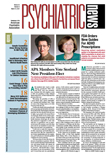The number of opiate addicts an individual physician is authorized to treat with buprenorphine under the Drug Addiction Treatment Act of 2000 (DATA 2000) has been raised from 30 to 100, the Substance Abuse and Mental Health Services Administration (SAMHSA) announced in January. The increase reflects a change in the office of National Drug Control Policy Reauthorization Act (ONDCPRA) of 2006.
This change applies to physicians who use buprenorphine (Suboxone and Subutex) to treat opioid dependence on an outpatient basis and who are in solo or group practices (Psychiatric News, January 5).
Under ONDCPRA physicians who meet four criteria may notify the Secretary of Health and Human Services of their intent to treat up to 100 patients with buprenorphine. The physician must meet these criteria:
•
Be qualified under DATA 2000.
•
Have allowed at least one year to elapse from the date he or she applied to treat 30 patients with buprenorphine before submitting the initial notification for authorization to treat a total of 100 patients.
•
Certify his or her capacity to refer patients for appropriate counseling and other appropriate ancillary services.
•
Certify that the total number of patients being treated with buprenorphine at any one time will not exceed 100.
With this change in the law, the next challenge is making addicts aware of buprenorphine treatment and that local physicians are qualified to provide it.
New York City's Department of Health and Mental Hygiene has, for example, teamed up with the nonprofit National Alliance of Advocates for Buprenorphine Treatment (NAABT) and local physicians and pharmacists in an outreach effort to publicize the treatment to opiate addicts. The first phase of the project was a subway ad alerting friends and loved ones of addicts about the disease of addiction and how buprenorphine is used to treat it.
Another part of the collaboration is a patient-physician matching system launched by NAABT. In this free and confidential system, potential patients register online and fill out a questionnaire. The system sends an e-mail about the patient to participating physicians, and when a patient and physician match is identified, the system sends the patient an e-mail urging him or her to call the physician for further information. The NAABT says that from the time the system became operational on September 1, 2006, through January 11, 1,383 patients have been matched with physicians.
NAABT is funded through private donations and an unrestricted educational grant from Reckitt Benckiser, the only FDa-approved manufacturer of buprenorphine for addiction treatment.
Notification forms and procedures are posted at<www.buprenorphine.samhsa.gov>. Additional information is available from Nicholas Reuter by phone at (240) 276-2700 or by e-mail at [email protected].
Information about NAABT is posted at<www.naabt.org>.▪
